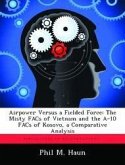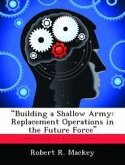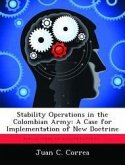"Operation Desert Storm, the 1991 Gulf War, and Operation Allied Force, the 1999 Air War over Serbia, saw US and coalition Air Forces attacking enemy fielded forces at unprecedented levels. Given the real change in the nature, strategy, and conduct of air operations in the last decade, this study examines how to most efficiently employ airpower to achieve its objectives in the asymmetric attack against a fielded army. During Desert Storm, US Air Forces developed medium altitude tactics increasing survivability by over-flying the range of Iraqi AAA and MANPADS. Difficulties in attacking from medium altitude were countered with massed formations of specialized armor-killing A-10s, the development of F-16. Killer Scouts, and the F-111 and F-15E tactic of " Tank Plinking" with laser guided bombs. During Allied Force, the challenge lay not in attacking the enemy, but in locating and identifying an army interspersed with a large number of civilian refugees. A systems approach is required to most efficiently attack a fielded army by air. The key is the integration of ISR assets through an intelligence "flex targeting" cell and the use of terminal air controllers such as Forward Air Controllers Airborne (FACAs), along with trained strikers capable of precision attack. This approach requires a change in Joint and Air Force doctrine acknowledging the supported role that US Air Forces have performed against enemy fielded forces over the last decade. It calls for the adaptation of the tactics, techniques, and procedures necessary to ensure the USAF prepares for these kinds of operations in the future."
Bitte wählen Sie Ihr Anliegen aus.
Rechnungen
Retourenschein anfordern
Bestellstatus
Storno









